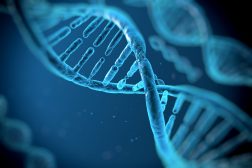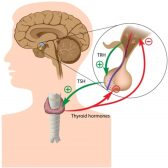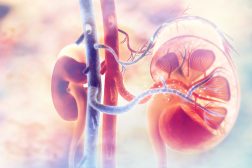Definition
noun, plural: pancreases or pancreata
A tongue-shaped glandular structure involved in the secretion of fluid containing protease, carbohydrase, and lipase, into the duodenum to aid in food digestion, as well as the secretion of insulin and glucagon into the bloodstream in order to regulate sugar levels in blood
pancreatic
adjective
Of, pertaining to, or associated with pancreas
Supplement
Pancreas occurs in all vertebrates although it appears in various forms and arrangements. For instance, many birds have three pancreatic ducts that drain into the foregut or duodenum. In teleosts, there is no distinct pancreas but a diffuse pancreatic tissue in the mesentery, liver, or spleen. In lampreys and lungfish, the pancreatic tissues occur as nodules inside the gut wall.
In humans and most mammals, the pancreas is an elongated structure that lies near the stomach. The head of the pancreas is encircled by the duodenum and its tail touches the spleen. The pancreas is a part of the digestive system and the endocrine system. It is part of the digestive system because it secretes pancreatic enzymes such as proteases, carbohydrase, and lipases into the duodenum in order to help digest larger, complex fats and proteins. The pancreas is also a part of the endocrine system since it is involved in the secretion of hormones, insulin and glucagon. These hormones are released into the bloodstream in order to regulate blood sugar levels. Anatomically, the pancreas consists of the following parts: (1) head and neck (2) body, and (3) tail. The head of pancreas is lodged within the curve of the duodenum. The formed prolongation of the angle of junction of the lower and left lateral borders in the head of the pancreas is referred to as the uncinate process. The pancreatic notch separates the uncinated process and the neck of pancreas. In between the neck and the tail is the body, which is the largest part of the pancreas. The pancreas has two main ducts: (1) the main pancreatic duct and (2) the accessory pancreatic duct that drain enzymes through the ampulla of Vater into the duodenum.1
Word origin: Latin pancreas, Ancient Greek pánkreas, pân (“all”) + kréas (“flesh”)
Synonym:
- sweetbread
See also:
Related term(s):
- Tail of pancreas
- Uncinate process of pancreas
- Inferior surface of pancreas
- Annular pancreas
- exocrine pancreatic insufficiency
- pancreatic insufficiency
Reference(s):
1 Young, B. (2006). Wheater’s functional histology : a text and colour atlas (5th ed.). Churchill Livingstone/Elsevier. pp. 299–301.






